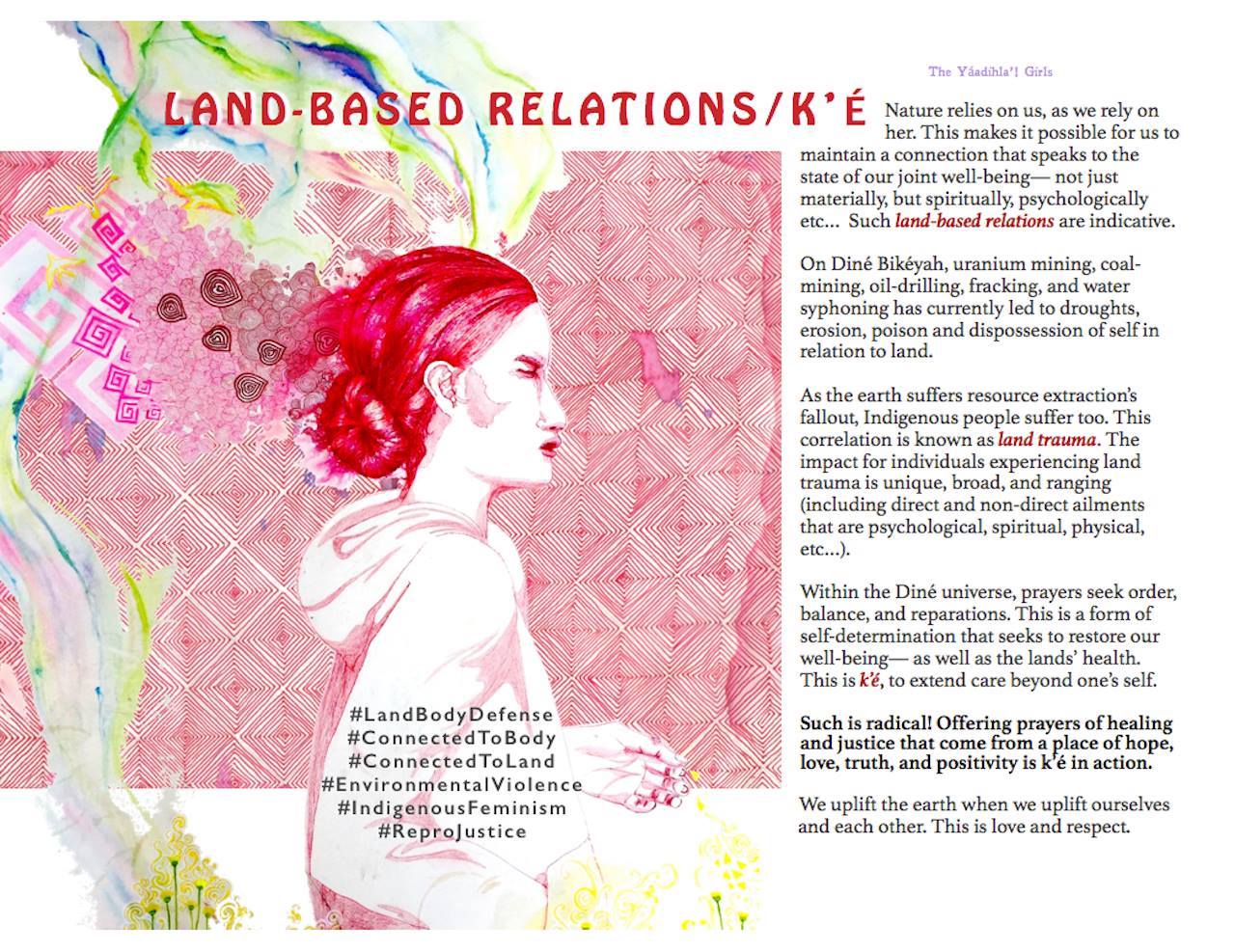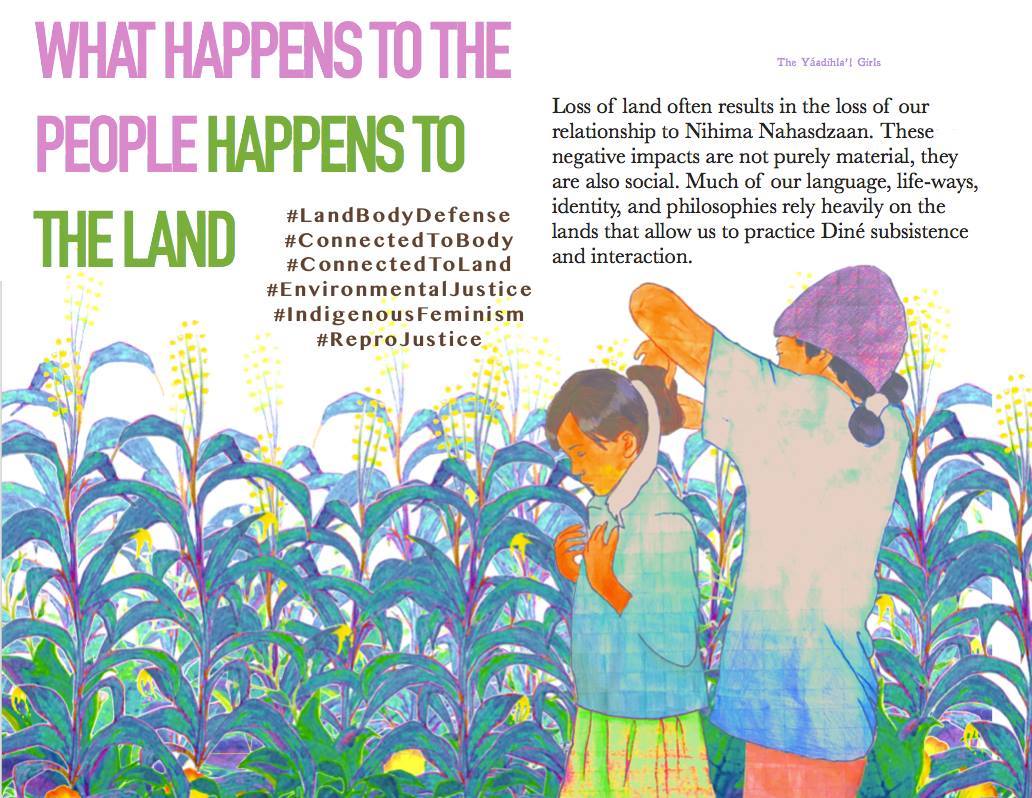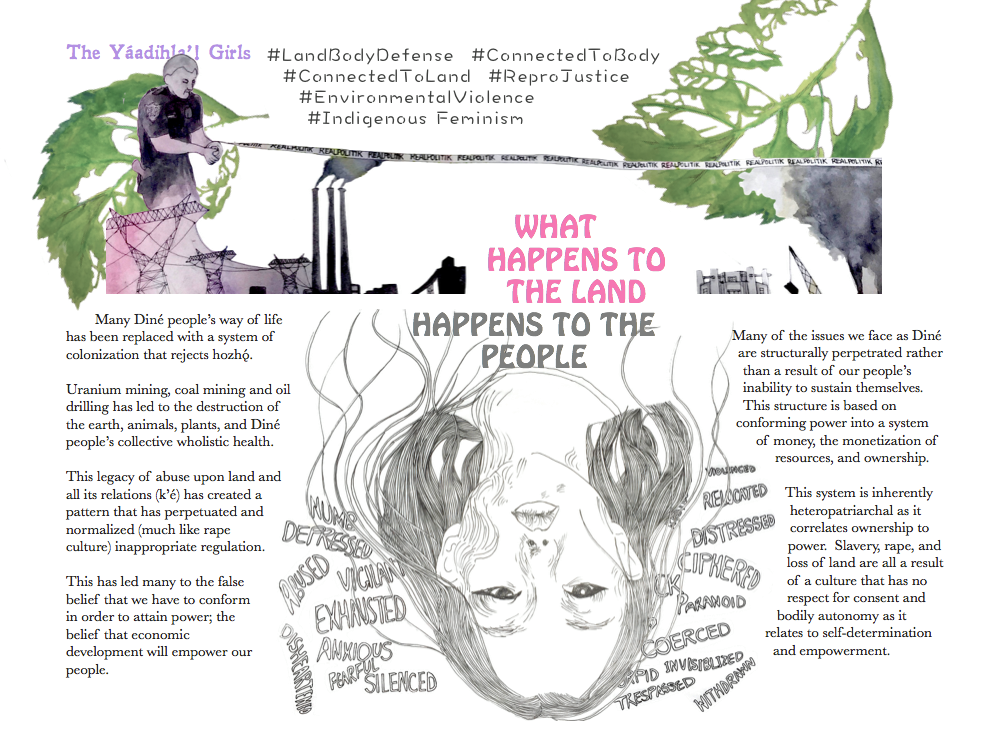Environmental Violence Art
Helen Knott
https://reclaimthewarrior.wordpress.com/
"Point of No Return"
Ink and Colour Pencil
By: John Isaiah Pepion - Piikani Artist
The proposed Site C Dam, is slated to flood 83 kms of valley along the Peace River in North Eastern British Columbia. It is a river that holds significant cultural history, burial sites, medicines, plants, important migratory corridors and has even found it’s name through local tribal history from when the Cree and Dane Zaa making Peace along it in the late 1700’s. Site C would be the third hydro dam along the river, the first, the W.A.C. Bennett dam actually flooded out Indigenous peoples from their homes. The river has long since been deprived from any “Peace” that its name depicts.
Hydro dams are not only acts of violence against Indigenous lands but acts of violence perpetuated on the Indigenous women, and peoples that belong to those lands. Flooding Indigenous lands on mass scales, such as in the case of Site C or the increasingly confrontational Muskrat Falls, does more than just create a loss of land. The land is an essential and integral part of Indigenous identity, playing a crucial role in the transmission of knowledge and stories relative to cultural history. The stories that are tied to that land will be drowning beneath the reservoir. Severing this connection is severing the right to identity and is an act of ongoing colonial violence.
The North Eastern part of BC is already heavily developed for resource extraction, making traditional lands compromised at best. The ability to feed one’s family off of the land through hunting and gathering, is becoming more questionable as more animals are found to be sick and thereby worrying elders, like my own Grandmother, June Bigfoot, who questions if the berries are even safe to be eaten. I, as her granddaughter, cannot even tell her that they are safe to be eaten without feeling like I may be lying to her. The previous dams along the river have already contributed to the formation of methylmercury, making the mercury levels in fish so high, it is only safe to digest one fish every one-two months. With the creation of the Site C dam, the mercury levels will reach spikes that will make it so that fish will not be safe to eat for two to three decades. How can we as Indigenous women and people provide for our families in ways that we know how, if we fear that we may be harming them in the process?
We are trying to protect what little we have left for the future generations. We are trying to honour the treaties that were signed by our ancestors. We are trying to speak for the earth, medicines, animals, and water that cannot speak for itself. They say that the path of least resistance makes rivers and men crooked, but we have been here, resisting. We did not make you crooked.
For the Federal Government to continue to issue permits for the Site C Dam to be built, in the face of lack of Free, Prior, and Informed Consent, and while there are still ongoing court cases by the West Moberly First Nations and Prophet River First Nations regarding the dam, is to continue forward with the paternalistic and colonial practices that have dated back to Manifest Destiny.
This is what the “Point of No Return” truly looks like.
big thanks to NYSHN and my brother John for working with me on this piece ![]() <3 Can't stop us united!
<3 Can't stop us united!
(1).jpg)
Land-Based Relations/ K’é
Nature relies on us, as we rely on her. This makes it possible for us to maintain a connection that speaks to the state of our joint well-being— not just materially, but spiritually, psychologically etc… Such land-based relations are indicative.
On Diné Bikéyah, uranium mining, coal-mining, oil-drilling, fracking, and water syphoning has currently led to droughts, erosion, poison and dispossession of self in relation to land.
As the earth suffers resource extraction’s fallout, Indigenous people suffer too. This correlation is known as land trauma. The impact for individuals experiencing land trauma is unique, broad, and ranging (including direct and non-direct ailments that are psychological, spiritual, physical, etc…).
Within the Diné universe, prayers seek order, balance, and reparations. This is a form of self-determination that seeks to restore our well-being— as well as the lands’ health. This is k’é, to extend care beyond one’s self.
Such is radical! Offering prayers of healing and justice that come from a place of hope, love, truth, and positivity is k’é in action.
We uplift the earth when we uplift ourselves and each other. This is love and respect.






